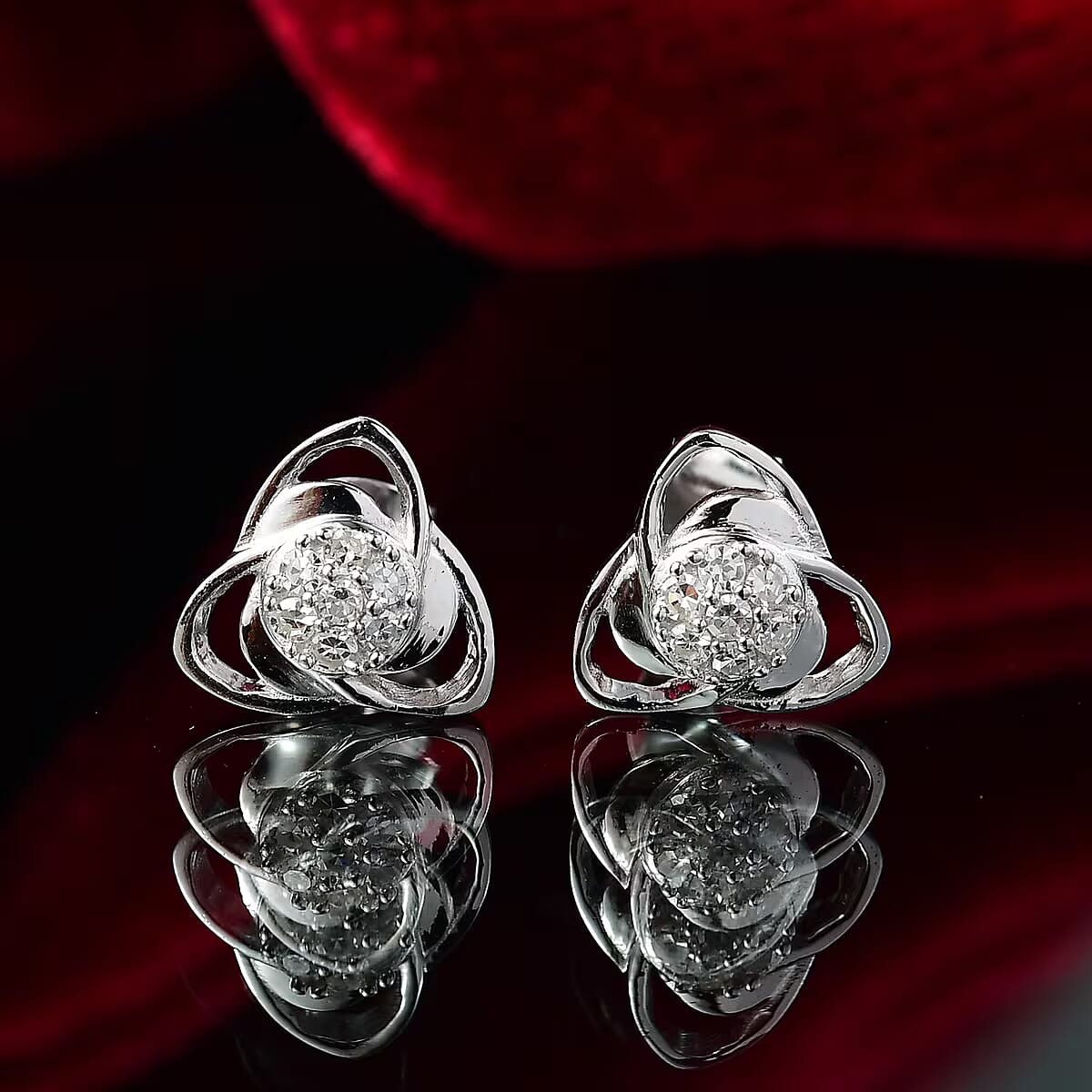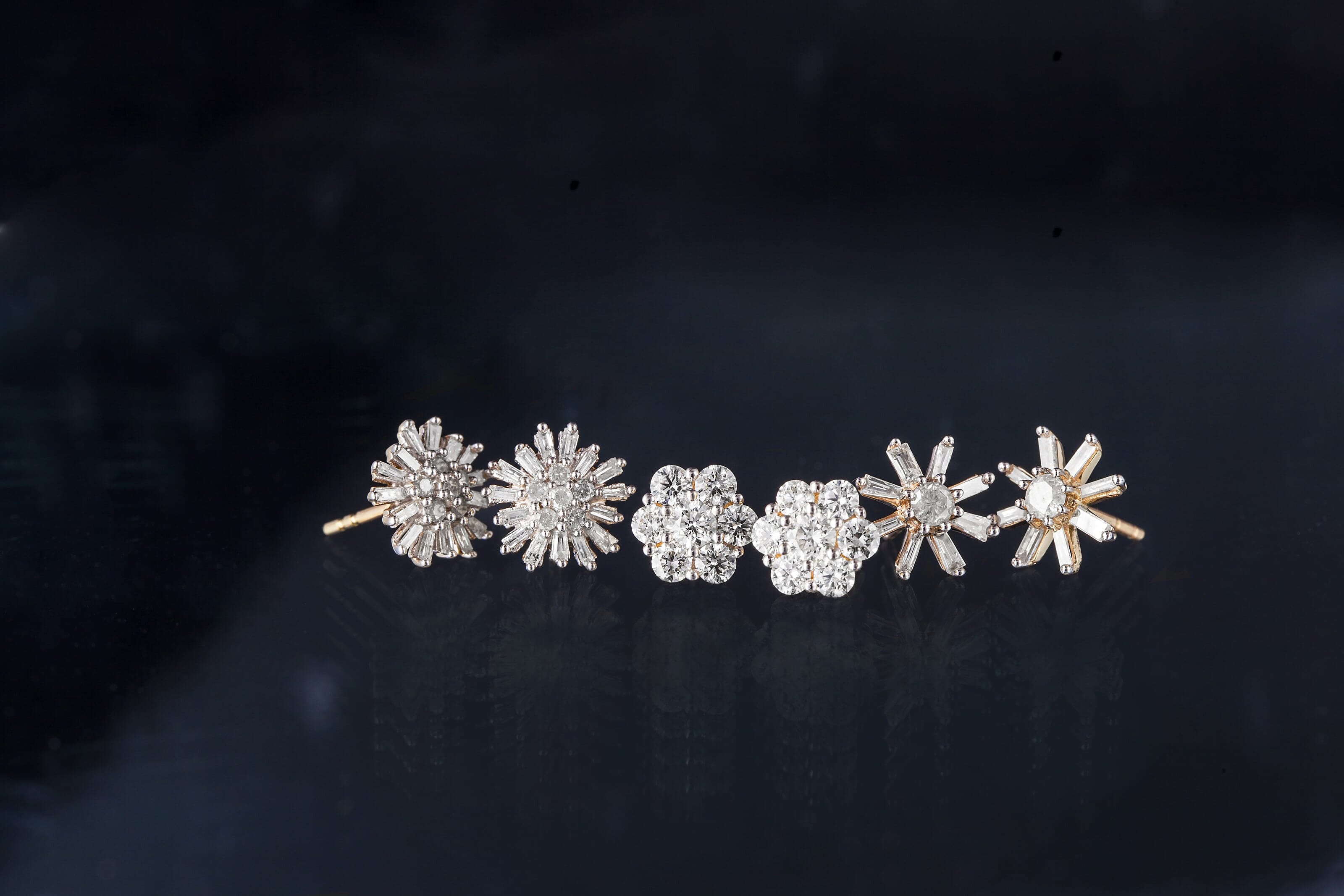
How Are Lab-Grown Diamonds Made
This guide explores how lab-grown diamonds are made, the science behind them, and why they are transforming the diamond industry. These diamonds, also known as engineered or lab-created diamonds, share the same chemical and structural properties as natural diamonds.
TABLE OF CONTENTS
1. How are lab-grown diamonds made?
2. The High-Pressure High Temperature (HPHT) Process
3. The Chemical Vapor Deposition (CVD) Process
4. Where Are Lab-Grown Diamonds Made?
5. How We Learned to Grow Diamonds
6. How Do Lab-Grown Diamonds Vs Natural Diamonds?
7. The Future of Lab-Grown Diamonds
8. Make this Ethical Elegance Yours
OVERVIEW
How are lab-grown diamonds made?
Diamonds have captivated humanity for centuries, symbolizing love, status, and timeless beauty. Traditionally, these gems formed deep within the Earth’s mantle over millions of years. Advanced technology has made it possible to create diamonds in a laboratory. Growing diamonds in a lab is precise, scientific, and fascinating. Before understanding how lab-grown diamonds are made, it's essential to define what they are.
Scientists use two advanced techniques to create diamonds in a laboratory:
• High-Pressure High Temperature (HPHT)
• Chemical Vapor Deposition (CVD)
Both methods start with a diamond seed—a tiny fragment of an existing diamond—placed in a controlled environment where carbon atoms bond, allowing the crystal to grow.
Each method plays a vital role in how lab-grown diamonds are made, influencing factors such as energy efficiency, growth speed, and purity levels.
PROCESS
The High-Pressure High Temperature (HPHT) Process
One of the primary answers to how lab-grown diamonds are made lies in the HPHT method, which replicates the intense heat and pressure found deep within the Earth's crust. Scientists developed this technique in the 1950s, and it remains a leading method for producing lab-created diamonds.
How It Works
• A diamond seed is placed in a chamber filled with carbon.
• The chamber is exposed to extreme pressure (over 1.5 million psi) and heat exceeding 1,500°C.
• Carbon melts and bonds to the diamond seed, crystallizing into a larger diamond.
• The new diamond is cooled and cut into a finished gemstone.
Key Characteristics of HPHT Diamonds
• They often have a slight yellow or brown tint due to nitrogen exposure during growth.
• HPHT diamonds can be treated post-growth to enhance color and clarity.
• This method produces large, high-quality diamonds but requires significant energy and specialized equipment.
Many jewelers use HPHT diamonds because they resemble natural diamonds in structure and growth patterns.
Explore exquisite lab-created diamonds in this collection.


The Chemical Vapor Deposition (CVD) Process
The CVD method represents a more advanced and energy-efficient way to create diamonds. This process allows for greater control over purity and color, making it the preferred technique for many high-end jewelers.
How It Works
• A diamond seed is placed in a vacuum chamber.
• The chamber is filled with a carbon-rich gas, such as methane.
• The gas is heated to temperatures between 700°C and 1,000°C, breaking apart the molecules.
• Carbon atoms attach to the seed, growing a diamond layer by layer over several weeks.
• Once fully formed, the rough diamond is cut and polished.
Key Characteristics of CVD Diamonds
• They are often purer than HPHT diamonds, with fewer inclusions.
• CVD diamonds typically have a colorless or near-colorless appearance.
• A defining characteristic of how lab-grown diamonds are made using CVD is the meticulous control over diamond size, purity, and structure.
Many jewelers use HPHT diamonds because they resemble natural diamonds in structure and growth patterns.
CVD diamonds are gaining popularity due to their high purity and ethical production process.
PRODUCTION
Where Are Lab-Grown Diamonds Made?
Lab-created diamonds are produced in high-tech facilities worldwide. Understanding how lab-grown diamonds are made also involves knowing where they are produced. These diamonds originate from high-tech labs across the world, ensuring quality and sustainability. Some of the leading locations for diamond production include:
• United States– Companies like Diamond Foundry use renewable energy to create sustainable diamonds.
• India & China– These countries lead large-scale diamond production using CVD and HPHT technology.
• Singapore– Home to IIa Technologies, one of the world’s largest producers of high-quality lab-grown diamonds.
The production location affects a diamond’s sustainability, quality control, and energy efficiency. Some laboratories operate on solar and renewable energy, reducing their environmental footprint.
Discover stunning diamonds made in state-of-the-art labs here.

GROWTH
From Stardust to Science: How We Learned to Grow Diamonds
For billions of years, diamonds have been Earth’s most coveted treasures, formed under immense pressure miles beneath its surface. But humanity’s obsession with perfection sparked a new pursuit—one that led scientists to ask:
"If nature can create diamonds, why can't we?"
Fast forward to today, and the answer lies in two groundbreaking processes that replicate Earth’s diamond-making magic:
• High-Pressure High Temperature (HPHT) – This ancient method was refined by modern technology.
• Chemical Vapor Deposition (CVD) – A futuristic, precise approach that builds diamonds layer by layer.
Both methods yield true diamonds—not simulants, not imitations, but the real thing, crafted in a lab rather than mined from the Earth.
And the best part? They shimmer with the same fire, the same brilliance—without the environmental and ethical concerns of traditional mining.
SIMILARITY
How Do Lab-Grown Diamonds Compare to Natural Diamonds?
Many consumers wonder, "How are lab-grown diamonds made, and do they compare to natural diamonds in quality and durability?" Lab-created diamonds have the same hardness, brilliance, and optical properties as mined diamonds.
Key Differences
• Price – Lab-created diamonds cost 40-60% less than natural diamonds of the same size and quality.
• Ethical Sourcing – Lab-grown diamonds are conflict-free and do not involve destructive mining practices.
• Resale Value—Natural diamonds have higher resale value due to their rarity, while lab-grown diamonds depreciate as production increases.
Sustainability – Lab diamonds require significantly less energy and do not contribute to habitat destruction.
DEMAND
The Future of Lab-Grown Diamonds
Lab-created diamonds are becoming a mainstream choice as demand for sustainable and ethically sourced jewelry grows.
• Luxury brands like Cartier and Tiffany & Co. are beginning to explore lab-created diamonds in their collections.
• Innovations in diamond technology are leading to carbon-negative diamonds, making them an even more eco-friendly choice. As technology advances in how lab-grown diamonds are made, researchers are developing carbon-negative diamonds, further reducing environmental impact.
• Market trendsindicate that lab-grown diamonds could account for 20% of the global diamond market by 2030.
As technology advances, the gap between lab-grown and natural diamonds continues to close. The future of fine jewelry is shifting toward ethical, sustainable, and affordable diamonds.
ENVIRONMENT FRIENDLY
Make this Ethical Elegance Yours
Lab-grown diamonds are a testament to human innovation, blending science with artistry. The science behind how lab-grown diamonds are made—whether through HPHT or CVD—has revolutionized the fine jewelry industry, offering a sustainable and ethical alternative to mined diamonds. They retain the same durability, brilliance, and elegance as natural diamonds, making them a compelling choice for modern buyers.
Whether chosen for ethical reasons, affordability, or sustainability, lab-created diamonds represent the future of fine jewelry. Explore the brilliance of lab-grown diamonds here.